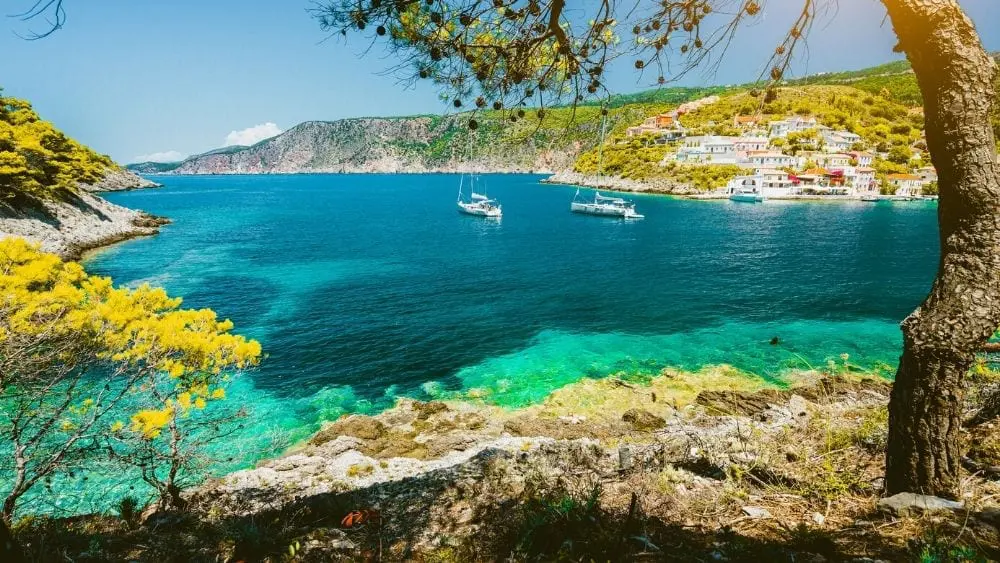Up-and-coming master-planned community feature gives land-locked homes water-front appeal

Billed in some quarters as the next great amenity, the first two Crystal Lagoons in the U.S. have opened in Florida — and home buyers are flocking to them.
“This is a complete game changer in terms of amenities,” said Craig Singleton, president of the Metro Development Group. He announced what would become America’s first Crystal Lagoon at the 2,000-home Epperson community in Wesley Chapel, Fla., near Tampa at an Urban Land Institute conference late in 2016. “It’s almost like being on a beach in the Bahamas, with clear water in front of you, except there are no jelly fish, Man-o-Wars or sharks.”
Crystal Lagoons are, well, crystal-clear bodies of water of practically any size and shape that turn otherwise land-locked properties into water-front communities. At Epperson, the nearly eight-acre lagoon is the focal point of the project. It has private sandy beaches, a swim-up bar, grotto, and kayak launch.
The second lagoon, also in Florida, is at The Beachwalk, another land-locked project in St. Augustine on Florida’s East coast. Here, a pristine, 14-acre lake with a waterfront village and a private club with white sandy beaches will be the centerpiece of a 1,000-house development.
The Beachwalk water feature is the largest to date for the Crystal Lagoons U.S. Corp., which is headquartered in Miami. But not for long, according to Chris Souza, regional director for the company’s Eastern U.S. division.
So far, the company has inked deals with 16 other developers, including Wynn Properties, the Las Vegas hotelier and casino operator which plans to bring to the desert the one thing the gambling Mecca lacks: Caribbean-style beaches. Wynn plans to turn a 38-acre golf course behind its two hotels on the Vegas strip into a huge water feature where visitors can not only swim and sun on the beach but also water ski, paddle board, and paraglide.
Crystal Lagoons bills itself as a technology company which offers developers a system for building and maintaining bodies of turquoise-clear water of unlimited size at a low cost. It can also turn otherwise non-viable properties into successful water-based projects, says the company’s former U.S. Corp CEO, Uri Man.
“This is an amenity that has the power to change the real estate paradigm,” Man says. “It can transform any location into an idyllic beach paradise and provide real estate developers unmatched value compared to traditional amenities.”
Metro’s Singleton certainly agrees. Before breaking ground, the company had more than 2,000 names on its waiting list, all with only a billboard on Interstate 75. Singleton attributes much of that to the property’s lagoon.
Of course, Crystal Lagoons come with a price. According to Man, builder D.R. Horton has been able to jump its prices four times at Epperson on houses that would cost $30,000 or less elsewhere. At the ULI meeting, John Kinney of Twin Creek Development Associates, the developer of Beachwalk, said, “We are able to drive higher lot prices because builders know their absorption rates are going to be quicker and their prices are going to be higher.”
Confirming those remarks, a study for Metro Development by MetroStudy found that Epperson benefitted from thousands of dollars in free advertising as a result of media coverage about its lagoon. More importantly, perhaps, the developer-builder registered a 21 percent increase in sales over a seven-month period, double that of its nearby competitors. And it nailed a similar jump in prices compared to only a 4-5 percent gain for the same exact houses at its Tampa property without a lagoon.
No wonder John Burns of John Burns Real Estate Consulting in Irvine, Calif., reports that the lagoons have become the top amenity for master-planned communities, actually replacing golf courses.
Crystal Lagoons currently has a portfolio of more than 600 projects in various stages of development worldwide and negotiations in 60 different countries. The largest currently in operation is 30 acres in Egypt, but a larger 90-acre lagoon is under construction in Dubai.
The company holds patents in 190 countries for its innovative technology. In the states, the technology is protected under the U.S. Patent and Trademark Office’s Fast Track Program for Green Technologies.
Citing proprietary reasons, the company won’t reveal much about how the lagoons are built, but they are excavated similar how man-made lakes are created and have linear bottoms similar to above-ground swimming pools. The liner is made of material that can withstand the sun’s strong UV rates and won’t deteriorate. “It can last over 100 years,” according to Man. While the lagoons can be of any size and depth – Man says there are no limitations – they are typically three-to-10 acres and eight-to-10-feet deep. They have shallow ends that are kid-friendly and deeper spots for all types of water sports. At a Cabo San Lucas property in Mexico, people powerboard on the lagoon.
The concept was created in Chile by developer Fernando Fischmann, a trained biochemist whose project was located on a part of the coastline where the water was bitterly cold with large waves and dangerous undercurrents. Indeed, swimming was prohibited. To overcome these negatives, Fischmann dreamed of creating a massive pool that would offer visitors the opportunity to swim and enjoy water sports in a safe, clean environment. After several fits and starts, he came up with the right formula, and the juggernaut company was born.
The lagoons use 30 times less water than a typical golf course, and they’re cheaper to build, too. A typical 5 to 10-acre lagoon costs about $650,000 an acre, Executive Vice President Kevin Morgan said, while a golf course runs $1 million a hole – and up to $1.7 million per for a high-end course.
The man-made feature can use any kind of water, including salt and brackish water. And they are always kept clean and clear while using only a fraction of the chlorine and other disinfectants used in a typical swimming pool. Instead, controlled disinfection pulses are sent into the water from electronic sensors embedded in the lagoon’s lining. A typical lagoon has about 400 sensors, all connected to the Internet and a water management team in Miami.
The lagoons use half the water of a typical park and a third of the water of a typical golf course, according to the company. They use 1 percent of the chemicals used for a swimming pool and half the energy its takes to operate a conventional pool filtration system. EVP Morgan would not disclose the cost to developers to manage a crystal lagoon, saying only that, “it is de minimis.”
In the U.S., Crystal Lagoons has inked deals for 17 properties to date, including one that will be operational soon in Houston, and Morgan says that number will likely, “be pushing 25 in short order.” It also has signed Olympian swimmer Michael Phelps to be its worldwide ambassador.

Lew Sichelman is a nationally syndicated housing and real estate columnist. He has covered the real estate beat for more than 50 years.
 Finding the Right Tornado Shelter for Your New Home
Finding the Right Tornado Shelter for Your New Home